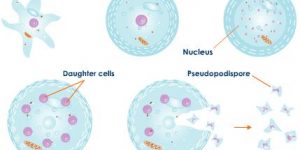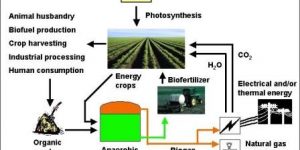The solar system is the one consisted of the sun and the nine planets that are revolving around it. There about 91 satellites revolving around the plants and more than 1 lakh of asteroids, comets and more. It is actually believed that the universe has been formed because of the Big Bang. Right after the Big Bang, the sun has been then surrounded by cloudy gases. These clouds have been converted slowly into rocks because of the contraction. These rocks kept up on colliding with one another and all through the process, they got broken or being fused together, so they could form bigger structures, which is now known as the planets. With such, the solar system you used to know come up into the existence.
Moreover, the gravitational force of the sun gives out the force needed for keeping up the plants into their orbits. There are about 99% of mass of the solar system is being contained into the sun. This is for the reason that, the Sun is the source of energy for every plant. The amount of energy that it provides is already into the desired proportion, which is also essential for the origin as well as for sustaining the life here on earth.
The Sun
Sun is the center of the solar system. The solar system’s mass contained into the sun is about 99% and mainly consists of helium and hydrogen together with the elements just like oxygen, magnesium, carbon, cobalt, nickel and more. It is actually the main energy source for the planets, especially on the earth where people are living. It is a ball of glass having a surface temperature of about 6000K. Its thickness is about 400km and its bright layer is known as the photosphere. The layer beyond the photosphere is not visible, since the gases are hot and lesser dense. The only thing is that, when there is solar eclipse, it looks like a crown, which is actually known as the “corona.”
On the other hand, the temperature into the core region is about 15 million K. With this temperature, the process of fusion known as thermonuclear takes place. This process is actually, where the 4 types of hydrogen nuclei fuse in order to form the helium nucleus. Throughout this process, some of the mass would be lots, and converted into energy, using the Einstein’s equation E= Δmc2. The Δm is considered as the lost mass and C is the speed of light into the vacuum. The sun’s mass is about 1.99 by 1030kg and known as the Solar Mass (M0).
1- Mercury
It is actually the innermost and smallest planet found within the Solar System. It orbits the sun every 81.969 earth days. On the other hand, its gravitational field is somewhat weak, having a very thin atmosphere and mainly consist vapors of the potassium and sodium. The surface actually has a number of craters being formed by the meteors. Some of the craters are then volcanoes and composed of no satellite. Life would never be possible for this planet.
2- Venus
It is considered as the second planet from the sun and the second one on the solar system. It is the earth’s neighbor and the composition is very similar of that to the earth and a brilliant plant. Its atmosphere is consisting of carbon dioxide clouds. As compared to other plants, Venus spins into an opposite direction, starting from east to west. With such, the sun appears to ruse into the west side of this planet. Its core contains metal like nickel and iron, wherein the crust is made up of rocks containing magnesium and silicate rocks. The surface has lots of mountains, volcanoes and valleys. It doesn’t have any sort of satellite, or moon.
3- Earth
It is the third planet from the sun and the one wherein living organisms live. It is the only planet where life exists, not to mention that it has the thin layer of the atmosphere extending up about 800 up to 100km. The atmosphere protects people from meteors burning out because of the friction right before reaching the surface of the earth.
The ozone layer of its atmosphere is blocking the ultraviolet rays of the solar radiation from reaching up the surface protecting people from the harmful effects it give. Its natural Green House Effect because of gases like carbon dioxide and methane keeps up the atmosphere warm enough for sustaining life.
With all of these positive circumstances, life has become originated and sustained upon the earth. The surface of the earth is rocky and has large proportion of the silicon dioxide. The core area is simply made of up molten mass containing magnesium, iron, silicates and more. It has its one natural satellite.
4- Mars
It is the fourth plant from the sun and often known as the Red Plant. This is for the reason that the iron oxide prevalent on the surface provides reddish appearance. Mars is actually a terrestrial type of planet having thin atmosphere and have a surface features that is somewhat reminiscent into both of the impact craters of the moon as well as valleys, volcanoes, deserts and the polar ice caps of the earth. It seasonal cycles and rational period are similar to that of the earth, as the tilt produces these seasons. Mars has its two moons namely Phobos and Deimos. They are small and shaped irregularly. Mars could simply be seen from the earth though a person is only using his naked eye. Its obvious magnitude could surely reach about -3.0, which happens to be a brightness being surpassed only by Venus, The moon, the Sun and Jupiter.
5- Jupiter
It is actually the fifth planet from the Sun and the largest planet that one could find within the solar system. It is a gaseous giant having a mass of 1000 of the sun. This planet is classified together with Uranus, Neptune, Saturn and more. Altogether, such four planets are referred to as the Jovian or the outer planet. Primarily, this planet is composed of hydrogen having a quarter of its mass, which is helium. It could also have rocky core of heavy elements. The mass of the Jupiter is about 2.5 times that of the other plants in combination. The volume of this planet is about 1,321 if the earth.
6- Saturn
It is the sixth planet of the solar system and the second largest planet right after Jupiter. It is also a gaseous giant having an average radius, which is 9 times that of the earth. While it only have 1/8 average density of the earth, with the larger volume, Saturn is simply over 95 times massive than the earth. It also has its ring system, consisting of nine continuous main rings and three discontinuous arcs, which are mostly composed of the ice particles having smaller amount of dusts and rocky debris. The number of known moons orbiting this planet is about 62 and 53 of it are named officially. It doesn’t include hundreds of moonlets within the rings. Titan is actually the largest moon of the planet and the second largest moon of the solar system. It is actually larger than Mercury and the only moon into the solar system that could retain substantial atmosphere.
7- Uranus
It is the 7th planet from the sun. In 1781 AD, William Herschel discovered this planet, which is 64 times bigger than the earth. The diameter is about 3.7 times that of Earth and the core contains magnesium, silicate and iron rocks. It has hydrogen layers and helium, which is also surrounded by the icy clouds of ammonia and methane. It also has 9 narrow rings of ash hue. The number of moons is about 21 and the planet could not be seen by the naked eyes.
8- Neptune
It is the eight and farthest planet from the Sun within the Solar System. It is the fourth largest planet in diameter and the third largest one by mass. It is then 17 massive than of the earth and similar in composition to Uranus and both of them have the compositions, which differ from those larger gas giants, which are Saturn and Jupiter. The atmosphere of Neptune, though it is similar to Saturn and Jupiter, it is still composed of helium and hydrogen together with the traces of the hydrocarbons as well as nitrogen. It even contains higher proportion of the ices, like methane and ammonia. At times, the astronomer categorizes both Neptune and Uranus to be the ice giants.
9- Pluto
Though people describe this 9the planet, it has been removed from the list of the planets in the solar system for certain reasons and at present. At present, it is not anymore a planet. For theories, this planet is cold, yellowish and dark. The density is actually similar than the earth. Thus, it is considered as terrestrial planet. The core actually contains silicate rocks, which happens to be surrounded by water, carbon dioxide and methane into the solid state. The outermost layer that it has contains methane, carbon dioxide and nitrogen. Its atmosphere is also consisted of methane. The orbit is highly elliptical and it forms a binary method with its Sheron, its moon and revolves around the usual center of gravity. Such planet could not be seen by the naked eyes.


